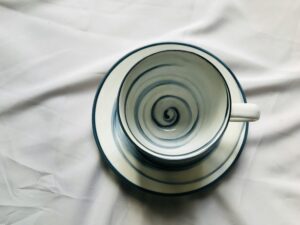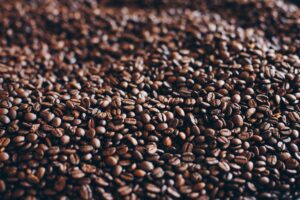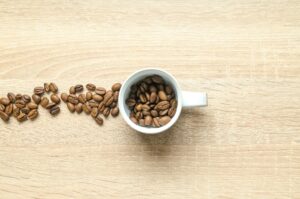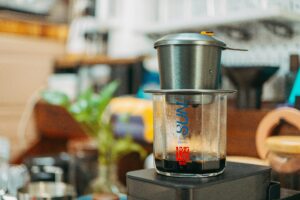The Perfect Bean for Your Brew: Does One Size Fit All?
Ladies and gentlemen, coffee enthusiasts and budding baristas, let’s begin with a fundamental question: Can one type of coffee bean suit all brewing methods? The answer is a resounding no. Choosing the right coffee bean is like choosing the right ingredients for a recipe — it makes all the difference.
Table of Contents
Story Time:
Imagine this: Sarah, a passionate coffee lover, invests in the finest Arabica beans. She’s thrilled as she tries her new French press, but something’s off. Her coffee is weak and bland. Why? The beans were meant for espresso, not for immersion brewing. The wrong bean choice turned her morning joy into disappointment.
Insight:
Different brewing methods bring out unique characteristics of coffee beans. Understanding which bean works best for each method is crucial. Let’s explore this in depth.
Arabica vs. Robusta: Which Bean Reigns Supreme for Your Favorite Method?
When it comes to coffee beans, two names dominate the stage — Arabica and Robusta. But which one should you choose?
- Arabica Beans: Known for their mild, aromatic flavor, these beans are perfect for drip coffee, pour-over, and cold brew. They offer a balanced taste with fruity and floral notes.
- Robusta Beans: These beans are bold, bitter, and high in caffeine. Their strong, earthy flavor is ideal for espresso and instant coffee.
Real-World Example:
Take a local coffee shop owner, James. He experimented with using Robusta beans for his drip coffee. His customers complained about the overpowering bitterness. He switched to a high-quality Arabica blend, and suddenly, his drip coffee became a crowd favorite.
Key Takeaway:
Choosing between Arabica and Robusta isn’t just about preference — it’s about the method you’re using. While Arabica is the darling of pour-over and drip coffee, Robusta is the robust hero for espresso and instant blends.
Lavazza Super Crema Whole Bean Coffee
Grind Size and Freshness: The Secret Weapons for Perfect Brewing
Now that we’ve covered bean selection, let’s talk about two critical aspects of coffee that most home brewers overlook — grind size and freshness.
Interactive Question:
What happens if you use a fine grind for French press coffee? Anyone?
Answer:
Exactly! It turns into a muddy mess. Why? Because French press is an immersion method that needs coarse grounds for even extraction.
- Coarse Grind: Best for French press and cold brew.
- Medium Grind: Perfect for drip coffee and pour-over.
- Fine Grind: Suited for espresso and AeroPress.
- Extra-Fine (Turkish Grind): Essential for Turkish coffee.
Story Time:
Anna, an aspiring home barista, was frustrated with her bitter espresso shots. After a bit of guidance, she discovered her grind was too coarse for espresso. She switched to a fine grind, and suddenly, her shots were rich, creamy, and perfectly balanced.
Freshness Tip:
Always use freshly roasted beans. Coffee loses its flavor quickly, so buy small batches and store them in an airtight container.
Brewing Methods Unveiled: How to Pair Beans with Your Favorite Technique
Let’s dive deeper into the most popular brewing methods and the best beans for each:
- French Press:
- Best Beans: Medium or dark roast Arabica with a coarse grind.
- Why: The immersion method highlights the beans’ natural oils and rich flavors.
- Best Beans: Medium or dark roast Arabica with a coarse grind.
- Espresso:
- Best Beans: Dark roast Robusta or a blend of Arabica and Robusta.
- Why: The intense pressure extraction needs strong flavors.
- Best Beans: Dark roast Robusta or a blend of Arabica and Robusta.
- Pour-Over (V60 or Chemex):
- Best Beans: Light or medium roast Arabica with fruity notes.
- Why: The method enhances subtle flavors.
- Best Beans: Light or medium roast Arabica with fruity notes.
- Cold Brew:
- Best Beans: Medium roast Arabica, preferably single-origin.
- Why: Long steeping times bring out smooth, sweet flavors.
- Best Beans: Medium roast Arabica, preferably single-origin.
Real-World Insight:
A famous café in Seattle found success by offering three different coffee options for their pour-over menu — a fruity Ethiopian for those who love acidity, a nutty Brazilian for a balanced cup, and a rich, chocolatey Colombian for those who prefer bold flavors.
Key Takeaway:
Understanding the relationship between your bean and your brew method is the first step toward a great cup of coffee.
Sourcing the Best Coffee Beans: From Farm to Your Cup
Finally, let’s talk about the source of your beans. Not all beans are created equal. Where they come from, how they’re grown, and how they’re processed all impact their flavor.
Key Factors to Consider:
- Origin: Ethiopian beans are fruity, while Colombian beans are rich and chocolatey.
- Processing Method: Natural, washed, and honey-processed beans all have unique flavor profiles.
- Roast Date: Always choose freshly roasted beans.
Story Time:
A young barista named Miguel traveled to Colombia and visited a local coffee farm. He saw how the farmers carefully picked only ripe cherries. That experience taught him that great coffee starts long before it reaches the cup.
Pro Tip:
Look for beans with clear labels, indicating the origin, roast date, and flavor profile. These details help you make an informed choice.
Final Thoughts: Mastering Your Brew with the Right Beans
So, my fellow coffee lovers, as we close this session, remember this: The best coffee beans are the ones that match your brewing method and flavor preference. Whether you love a bold espresso or a smooth pour-over, choosing the right beans is the secret to an unforgettable cup.
Are you ready to take your coffee game to the next level? Start experimenting with different beans and brewing methods. Taste, explore, and most importantly, enjoy the journey.







